A group of researches has created a hydrogel membrane that “opens†and “closes†in response to magnetic flux. The discovery could lead to delivery systems capable of precision drug therapy for a host of conditions.
(more…)
Tag: Cool Stuff
-
Cool Technology for Pharmacy
-
How to perform an autopsy without getting dirty.
Norrköping Visualization Centre and the Center for Medical Image Science and Visualization in Sweden have developed a Virtual Autopsy Table. The table makes use of high resolution MRIs to create incredible 3D images that can be manipulated on the table via multi-touch technology.
(more…) -
Cool Technology for Pharmacy
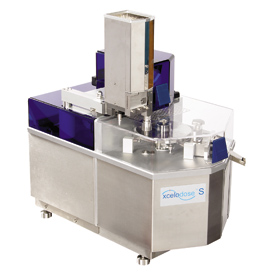 The Xcelodose 600 S System , manufactured by Capsugel, a division of Pfizer, is a precision powder micro-doser and automated encapsulator designed for pharmaceutical research and development. The system has the ability to fill formulations or active pharmaceutical ingredient (API) directly into capsules with a remarkable level of accuracy. The Xcelodose can weigh doses as low as 100 micrograms from a variety of powders, including free flowing, sticky, granular and blended. In addition, the Xcelodose can dispense API in capsule sizes ranging from 00 to 4.
The Xcelodose 600 S System , manufactured by Capsugel, a division of Pfizer, is a precision powder micro-doser and automated encapsulator designed for pharmaceutical research and development. The system has the ability to fill formulations or active pharmaceutical ingredient (API) directly into capsules with a remarkable level of accuracy. The Xcelodose can weigh doses as low as 100 micrograms from a variety of powders, including free flowing, sticky, granular and blended. In addition, the Xcelodose can dispense API in capsule sizes ranging from 00 to 4.Simply poor the ingredients into the hopper, select the proper capsule size and hit the “go” button. Nothing could be simpler. The Xcelodose 600 can generate up to 600 capsules per hour while keeping detailed records of individual, as well as batch, capsule weight. Capsules not meeting strict control standards, typically 2% tolerance, are automatically jettisoned by the machine. By encapsulating API directly into capsules without the need for excipients, the Xcelodose System can reduce the amount of ingredient required and reduce overall development time by simplifying the process.
The entire process is controlled via a computer terminal with a graphical user interface written in Visual Basic. While not designed for individual pharmacy use, it’s still one heck of a machine.
-
Using a “micro shuttle†to control drug delivery
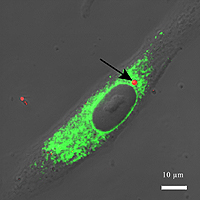 Queen Mary University of London: “The capsules, which have a diameter of two micrometers (about the size of a bacterium), are built by wrapping strands of a metabolism-resistant material around spherical particles, which are then dissolved in acid, leaving behind an empty container. To fill the capsules, the scientists heat them in a solution that contains the desired drug compound. This makes them shrink and traps some of the solution and compound inside. The loaded capsules are introduced into live cells by a technique known as electroporation – a tiny electric shock – which makes the cell walls permeable for micrometer-sized particles. The cells are unharmed by this treatment and retain the capsules.†– The article refers to the capsules as “micro shuttles†and states that the release of medication could also be controlled “by a biological trigger like a drop in blood sugar levels, or activated manually with a pulse of light.†– I worked on something similar as an undergrad. We applied various currents to polyaniline, forcing the polymer to take up and hold certain molecules. Reversing the current resulted in the polyaniline dropping the substance. Crazy technology! It makes me want to get into R&D.
Queen Mary University of London: “The capsules, which have a diameter of two micrometers (about the size of a bacterium), are built by wrapping strands of a metabolism-resistant material around spherical particles, which are then dissolved in acid, leaving behind an empty container. To fill the capsules, the scientists heat them in a solution that contains the desired drug compound. This makes them shrink and traps some of the solution and compound inside. The loaded capsules are introduced into live cells by a technique known as electroporation – a tiny electric shock – which makes the cell walls permeable for micrometer-sized particles. The cells are unharmed by this treatment and retain the capsules.†– The article refers to the capsules as “micro shuttles†and states that the release of medication could also be controlled “by a biological trigger like a drop in blood sugar levels, or activated manually with a pulse of light.†– I worked on something similar as an undergrad. We applied various currents to polyaniline, forcing the polymer to take up and hold certain molecules. Reversing the current resulted in the polyaniline dropping the substance. Crazy technology! It makes me want to get into R&D. -
Cool Technology for Pharmacy
 Proteus Biomedical: “Proteus ingestible event markers (IEMs) are tiny, digestible sensors made from food ingredients, which are activated by stomach fluids after swallowing. Once activated, the IEM sends an ultra low-power, private, digital signal through the body to a microelectronic receiver that is either a small bandage style skin patch or a tiny device insert under the skin. The receiver date- and time-stamps, decodes, and records information such as the type of drug, the dose, and the place of manufacture, as well as measures and reports physiologic measures such as heart rate, activity, and respiratory rate. The IEM is the cornerstone of the company’s Raisinâ„¢ System, which is currently in clinical development. The Raisinâ„¢ System measures the body’s response to medications and is intended to improve the management of chronic diseases like heart failure, infectious disease and psychiatric disorders.â€
Proteus Biomedical: “Proteus ingestible event markers (IEMs) are tiny, digestible sensors made from food ingredients, which are activated by stomach fluids after swallowing. Once activated, the IEM sends an ultra low-power, private, digital signal through the body to a microelectronic receiver that is either a small bandage style skin patch or a tiny device insert under the skin. The receiver date- and time-stamps, decodes, and records information such as the type of drug, the dose, and the place of manufacture, as well as measures and reports physiologic measures such as heart rate, activity, and respiratory rate. The IEM is the cornerstone of the company’s Raisinâ„¢ System, which is currently in clinical development. The Raisinâ„¢ System measures the body’s response to medications and is intended to improve the management of chronic diseases like heart failure, infectious disease and psychiatric disorders.â€The Financial Times is reporting that the pharmaceutical company Novartis is partnering with Proteus Biomedical to implant these IEMs into oral blood pressure medications. The IEMs are designed to send reminders to patients, in the form of a text message, when non-compliant with their medication regimens.
No word on what blood pressure medication they’re using, but Novartis is the maker of Lotrel, Tekturna and Diovan.
Remember, Big Brother is watching.
-
Thoughts on speech recognition in pharmacy
I still work in the pharmacy on occasion. It keeps me up to date with changes that I’ve made to various pharmacy systems and gives me the opportunity to make sure my pharmacist skills haven’t evaporated. One thing it doesn’t do is get me away from my current technology related duties. In fact it puts me closer to the action and even more accessible to pretty much everyone, which means I spend a majority of my “staffing†time dealing with things related to our automation; carousel picks and loads, packager fills, compunder checking, labeler input and checking, minor troubleshooting, etc. It’s not that someone else can’t do it, but that’s the way it works out.
(more…) -
Cool Technology for Pharmacy
The Capsule Machine
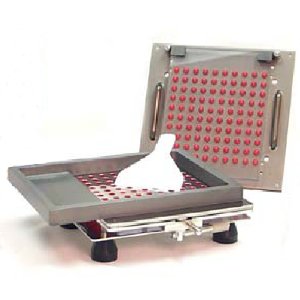 Capsule machines don’t exactly automate the process of filling capsules from scratch, but they sure do speed up the process. Anyone that has spent time punching capsules by hand will appreciate what a capsule machine can do for you. They are a real time saver.
Capsule machines don’t exactly automate the process of filling capsules from scratch, but they sure do speed up the process. Anyone that has spent time punching capsules by hand will appreciate what a capsule machine can do for you. They are a real time saver.Devices like these are used almost exclusively by compounding pharmacies and typically make up to 100 capsules at a time. Sure there are bigger capsule machines out there, but they typically aren’t used in community based pharmacies. I spent many hours in just such a pharmacy using capsule machines to make all sorts of things for both human and animal consumption. I don’t know how many thousand capsules I made, but rest assured it was a lot.
(more…) -
Cool Technology for Pharmacy
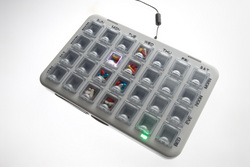 Maya from MedMinder looks like and ordinary medication organizer with 28 separate compartments representing a week’s supply of medication (7 columns = 7 days/week x 4 rows = AM/Noon/PM/HS). The device uses wireless technology to update MedMinder’s central database with the patient’s medication activity. Patients and caregivers can access this information via the web or receive emails and text messages with reminders and reports.
Maya from MedMinder looks like and ordinary medication organizer with 28 separate compartments representing a week’s supply of medication (7 columns = 7 days/week x 4 rows = AM/Noon/PM/HS). The device uses wireless technology to update MedMinder’s central database with the patient’s medication activity. Patients and caregivers can access this information via the web or receive emails and text messages with reminders and reports.
(more…) -
First Impression – Dell Latitude XT2
 I got my hands on another new tablet PC today. This time it was the Dell Latitude XT2. This is our hospitals convertible tablet of choice. I would have preferred the Lenovo ThinkPad X200 Tablet, but as I have mentioned many times before we are a Dell shop.
I got my hands on another new tablet PC today. This time it was the Dell Latitude XT2. This is our hospitals convertible tablet of choice. I would have preferred the Lenovo ThinkPad X200 Tablet, but as I have mentioned many times before we are a Dell shop.The Dell Latitude XT2 is a very elegant looking tablet PC, but was a bugger to configure. The tablet didn’t want to stay connected to the hospitals wireless network. This is in sharp contrast to the Motion J3400 I mentioned earlier this week which grabbed onto our network right out of the box. The problem turned out to be the Latitude’s ControlPoint Connection Manger. I was able to find some information by searching Google after a disastrous call to the Dell customer service line. I had all the right credentials to access the mega-super-extra-special customer service rep, but that turned out to be worth about the same as a hand full of rocks. Anyway, I ended up uninstalling the ControlPoint Connection Manger and restarting Window’s connection manager via MMC. After that the tablet’s connection to the hospital network worked great, but the “Tablet Buttons†that allow the user to operate screen rotation in slate mode stopped working. More research led me to a software bundle called the ControlPoint System Manager. I installed that and the buttons started working, but I lost the digitizer. An additional 30 minutes of googling led me to the N-Trig software bundle, which finally got me up and running. I’m sure all this would have been much easier if the DVD that the customer support website kept referring to was actually in the box. I never did find it.
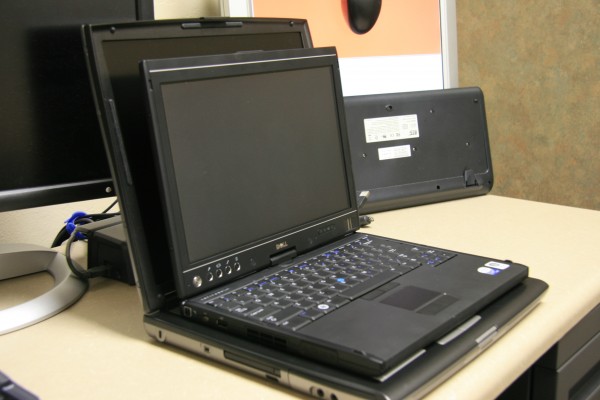 Now, on to the good stuff. The XT2 is a very nice machine. It is smaller then my Dell Latitude D520 by quite a bit (see photo). The J3400 is similar in size, but looks significantly bulkier. I prefer the look and feel of the XT2. The screen on the Dell is small (12.1â€), but very sharp and easy to read. Like the Motion tablet it is much faster then the tablet PCs the pharmacists are currently using.
Now, on to the good stuff. The XT2 is a very nice machine. It is smaller then my Dell Latitude D520 by quite a bit (see photo). The J3400 is similar in size, but looks significantly bulkier. I prefer the look and feel of the XT2. The screen on the Dell is small (12.1â€), but very sharp and easy to read. Like the Motion tablet it is much faster then the tablet PCs the pharmacists are currently using.The tablet came with Windows XP pre-installed which is fine. The inking experience is very nice. The feature I like the most so far is the ability to navigate with either finger-tip-touch or the pen. I can quickly change back and forth by tapping the screen twice with my finger to activate the touch interface, or by tapping the screen twice with the pen to activate the pen interface. This little feature alone kept me entertained for quite a while. It made surfing the internet more of a treat then usual.
Based on the limited time I’ve had to spend with the tablet I have to say it’s a keeper. I actually like it quite a bit more then the Motion J3400. I’ll update you on how well it performed in the pharmacy after I’ve had a chance to put it through it paces. Until then, I have a new toy.